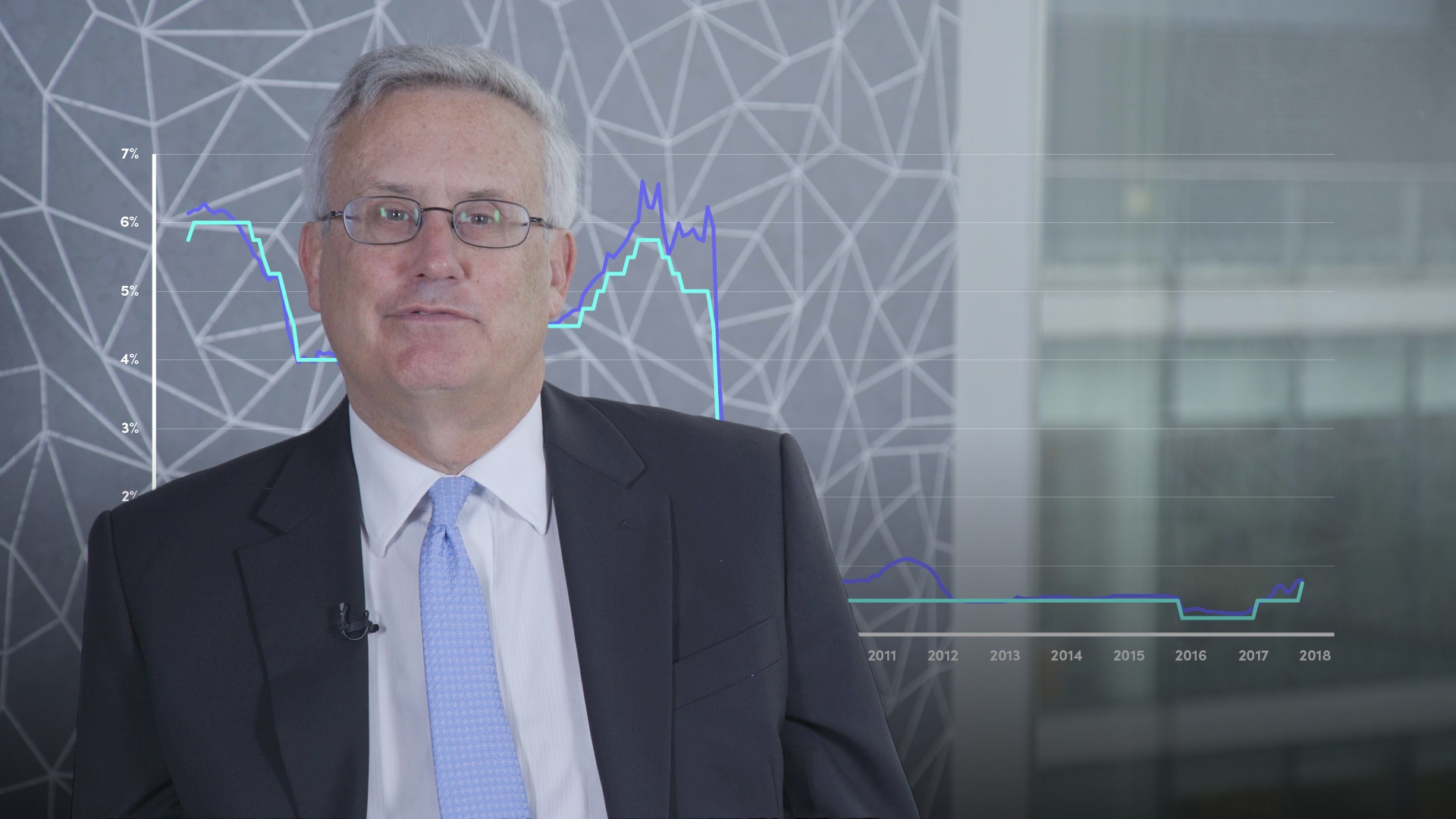
Introduction to Floating Rates

Peter Eisenhardt
30 years: Capital markets & investment banking
Peter explains what floating rates are and explains why the most important floating rates are in fact central bank policy rates.
Peter explains what floating rates are and explains why the most important floating rates are in fact central bank policy rates.
Subscribe to watch
Access this and all of the content on our platform by signing up for a 7-day free trial.

Introduction to Floating Rates
10 mins 27 secs
Key learning objectives:
Understand how floating rates are used
Learn why floating rates are useful
Learn why floating policy rates are important to central banks
Overview:
Floating rates are interest rates that move up or down over time based on interest-rate benchmarks agreed between market counterparties or banks and their customers. Central banks use floating policy rates to conduct monetary policy and determine the flow of money into the economy.
Subscribe to watch
Access this and all of the content on our platform by signing up for a 7-day free trial.
How are floating rates used?
Floating interest rates move up and down over time. Most loans and interest-rate derivatives contain references to a floating rate, meaning the parties have agreed that a floating-rate payment will be made from one to the other on a series of agreed dates in the future. At the start of the contract, neither party knows what the future interest rates will be, but both parties agree that those future interest payments will be determined at or close to the future date of those actual payments.
Each determination is made with reference to a benchmark that parties select. At the start of the contract, they agree the rules for observing these future floating rates. Every parameter will be agreed, except what the actual interest payments will be on the relevant future dates:
- Which floating-rate benchmark
- The frequency of floating-rate payments
- The exact moment the calculation will be made (or ‘fixed’)
Why are floating rates useful?
Floating rates enable lenders to separate two distinct risks embedded in any loan agreement:
- Credit risk (the risk that a customer or counterparty doesn’t keep up repayments)
- Interest-rate risk (the risk that the underlying interest-rate environment changes, rendering a rate on a loan too low to have offered at the inception)
Loan officers can insulate themselves from the risk of having made bad interest-rate calls by lending on a floating-rate basis. Corporates operating in cyclical sectors wishing to sell bonds to institutional investors, but wanting to protect themselves against economic fluctuations that might impact its interest service, can sell bonds to investors in floating-rate format. Or more commonly, they can sell fixed-rate bonds and enter into an interest-rate swap arrangement that transforms its interest obligations into floating-rate ones.
Why are floating policy rates important to central banks?
Financial markets have historically used reference rates instead of policy rates. LIBOR has historically been the most widely used. But the most fundamental floating interest rates are the policy rates set by central banks, such as the Fed Funds rate in the US and the Bank of England base rate.
The propensity of policy rates to rise or fall is usually determined by a desire to control the supply of money in a given currency. In developed economies, most money is created by commercial banks and their customers rather than central banks. By exercising their power to set policy rates, central banks can influence the propensity of commercial banks and their customers to create money. They can adopt expansionary or contractionary monetary policy.
- Expansionary monetary policy: when central banks wish to stimulate economic activity, they reduce policy rates to reduce the cost of borrowing in the real economy. A lower cost of borrowing leads to a rise in commercial bank lending and in the supply of money into the real economy. An increase in money supply stimulates demand and investment, thereby promoting economic growth.
- Contractionary monetary policy: when central banks wish to cool the supply of credit (and therefore money) into the real economy, or control the inflationary effects of too much money chasing too few goods, they can raise policy rates, thereby increasing the cost of borrowing.
Subscribe to watch
Access this and all of the content on our platform by signing up for a 7-day free trial.

Peter Eisenhardt
There are no available Videos from "Peter Eisenhardt"



























